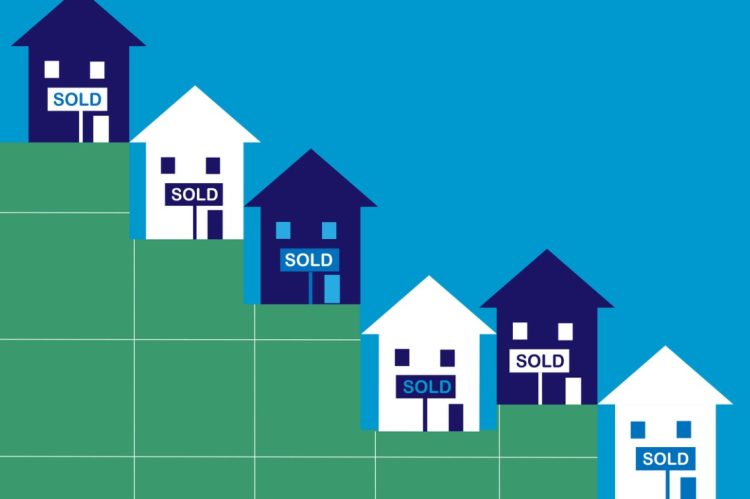After a jump in inventory with only a slight inch up of existing-home sales back in May, June saw existing-home sales and unsold inventory drop, per the latest report from the National Association of Realtors® (NAR).
Existing-home sales have dropped month-over-month by 2.7%, or 3.93 million at a seasonally adjusted figure. Unsold inventory crept down by 0.6%, meaning 1.53 million units, putting current inventory at 4.7 months’ supply. Year-over-year, existing-home sales were unchanged, but there was a 2% increase in median price: $435,500, the highest ever for June per NAR.
In a media call walking through the data, NAR Chief Economist Lawrence Yun attributed housing demand and sales “not picking up” to ongoing affordability challenges such as high mortgage rates—the 30-year mortgage rate is currently 6.75%. He also noted that there is some seasonality to high summer prices: the “school impact,” or families choosing to move during their children’s summer vacation to minimize disruption. This impact, though, does not tell the whole story.
“Multiple years of undersupply are driving the record-high home price. Home construction continues to lag population growth. This is holding back first-time homebuyers from entering the market. More supply is needed to increase the share of first-time homebuyers in the coming years even though some markets appear to have a temporary oversupply at the moment,” said Yun in an NAR press release about the sales report. He also noted how the high prices reflect homeowner wealth increasing; the average homeowner’s wealth is up $140,900 compared to the last five years.
Around 30% of June buyers were first-time buyers, unchanged month-over-month, but up from 29% in June 2024. Danielle Hale, chief economist of Realtor.com®, noted in emailed remarks about the sales report that the housing market “is in balanced territory after almost a decade of seller-friendly conditions,” a balance which she described as a “new norm.” Despite the scales tipping away from seller advantage, incentives have not caught up for buyers.
“Although the structural housing shortage remains a concern, and lackluster single-family construction will exacerbate that shortage in the medium term, the financial considerations for many households evaluating whether to rent or buy are tipped firmly toward renting, with an estimated $900 per month advantage as of June. This helps to explain softer demand in the for-sale market,” said Hale.
During the Q&A section of the call, Yun projected that “if the mortgage rates do not decline, I think we will have very small incremental gains in sales,” due to small improvements in affordability from wage growth outpacing prices.
“We did some analysis, and we believe that if the mortgage rate were to go down to 6%, there’s likely to be additional half a million, little over half a million home sales overall,” said Yun. He noted that the Federal Reserve has “hinted at some possible rate cut later this year.” June inflation data has made many doubt that cuts will happen at the forthcoming July Federal Open Market Committee (FOMC) meeting, though Fed board member Chris Waller has said he will vote to cut rates.
In emailed remarks, Coldwell Banker Affiliates President Jason Waugh described some of the adjustments sellers (and by extension their agents) will have to make:
“Unlike in recent years—when listings often attracted immediate interest and offers within minutes—today’s environment might require a more measured approach, depending on the dynamics of the local market. Sellers may need to exercise greater patience as homes take longer to attract buyers.”
Regional breakdown
The Northeast, which continues to post the lowest number of existing-home sales overall in the four major U.S. census regions, saw sales decline both monthly (8%) and annually (4.2%) to 460,000. The median price in the Northeast was $543,000, up 4.2% annually.
Existing sales in the Midwest declined monthly by 4% to 950,000, but picked up 2.2% year-over-year. The median Midwest price was $337,600, up 3.4% annually. The same was seen in the South, where existing sales were down 2.2% monthly but up 1.7% annually at 1.81 million. The median price in the South was $374,500, up 0.3% annually.
The West was the only region where existing-home sales were up both monthly (1.4%) and annually (4.1%), for a figure of 710,000. The median price in the West was $636,100, a 1% annual increase.
For the full NAR report on existing-home sales, click here.












